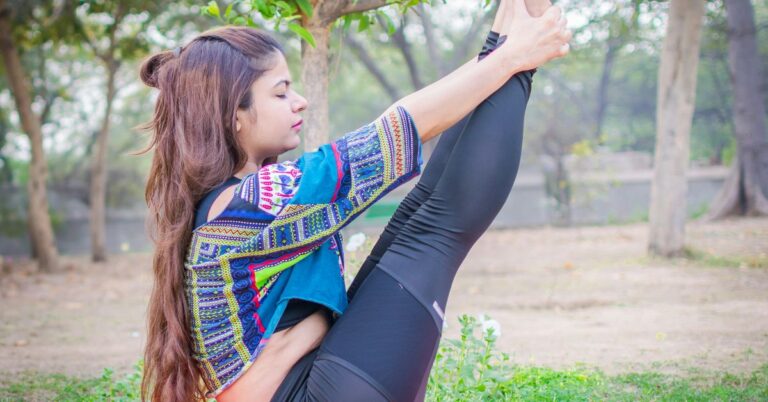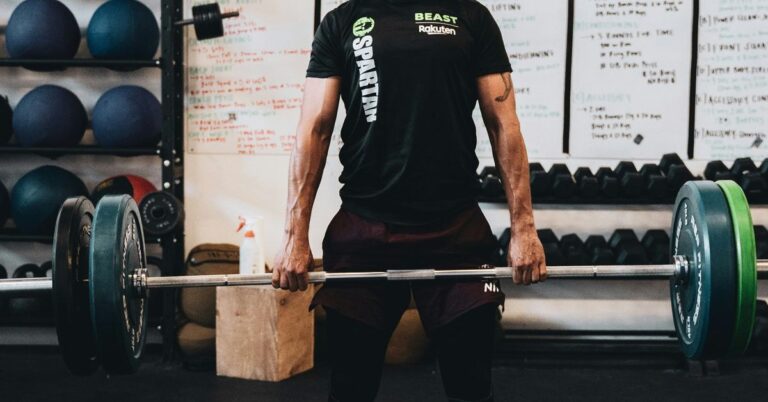Unlock the Secrets to Tailored Conditioning Techniques for Every Sport You Love
Whether you’re a weekend warrior or a seasoned pro, one thing remains true: conditioning is the backbone of any sport. It’s not just about long runs or countless hours in the gym; it’s about understanding your body and how it interacts with the unique demands of your chosen sport. So, how do we unlock the secrets to tailored conditioning techniques? Let’s dive into this essential topic and uncover what it takes to elevate your performance, no matter what sport you love.
The Art of Tailoring Conditioning
Every athlete is different, and the same goes for every sport. Conditioning for a marathon runner is drastically different from that of a football lineman. Yet, many people overlook this fundamental truth, often leading to either overtraining or undertraining. Remember the last time you saw someone at the gym doing deadlifts, thinking they were preparing for a triathlon? (Spoiler alert: they weren’t.)
To effectively tailor conditioning techniques, we must first understand the specific physical demands of each sport. Here’s how you can start to identify these needs:
- Energy System Demands: Different sports rely on various energy systems—anaerobic vs. aerobic—so knowing which one your sport uses most often can help guide your training.
- Movement Patterns: Each sport has distinct movement patterns. For instance, a gymnast requires flexibility and explosive strength, while a soccer player needs endurance and agility.
- Injury Prevention: Tailoring your conditioning can also minimize injury risks associated with specific sports. Understanding common injuries in your sport can help you focus on the right muscle groups.
Conditioning Techniques for Popular Sports
Now that we’ve laid down the groundwork, let’s explore some tailored conditioning techniques for various sports. It’s like being handed a secret recipe; you just need to know which ingredients to mix together!
Running
For those who love the open road (or treadmill), conditioning revolves around building endurance, speed, and strength. Here are some tailored techniques:
- Long Runs: These help build your aerobic base. Aim for one long run each week, gradually increasing your distance.
- Interval Training: Incorporate short bursts of high-intensity running followed by recovery periods. It’s a game-changer for speed.
- Strength Training: Don’t skip leg day! Squats, lunges, and calf raises can enhance your running performance and reduce injury risks.
As a former runner myself, I recall the first time I discovered interval training. It was like finding a cheat code in a video game—suddenly, I was not only running faster but also feeling more energized.
Soccer
Ah, soccer—the beautiful game! Conditioning for soccer players must focus on agility, endurance, and explosive power. Here’s how to gear up:
- Agility Drills: Shuttle runs, ladder drills, and cone drills will sharpen your footwork and quick direction changes.
- Endurance Training: Mix steady-state runs with interval sprints to build the stamina needed for those 90-minute matches.
- Core Strength: A strong core enhances balance and stability, vital for kicking and changing directions.
I once watched a local soccer team that integrated dance moves into their warm-ups. At first, it looked ridiculous, but they had the best footwork in the league. Who knew a little shimmy could improve agility?
Basketball
Basketball players require a unique blend of strength, speed, and agility. Conditioning for this sport must encompass:
- Plyometric Exercises: Box jumps and burpees can help develop explosive power for those slam dunks.
- Endurance Workouts: Consider incorporating high-intensity interval training (HIIT) sessions to replicate the stop-and-go nature of a game.
- Flexibility Training: Stretching routines to maintain flexibility can prevent injuries and enhance your on-court performance.
It struck me how many players would neglect stretching, thinking it was only for yoga enthusiasts. But trust me, the last thing you want is to pull a hamstring mid-game!
Swimming
For swimmers, conditioning is about building strength and endurance while minimizing resistance. Here’s a tailored approach:
- Technique Drills: Focus on stroke efficiency through drills that emphasize form, like single-arm swimming and catch-up drills.
- Dry Land Training: Incorporate strength training exercises, such as medicine ball throws and resistance band exercises.
- Interval Sets: Practice different distances at varying speeds to build stamina and speed.
(I remember how disheartening it was to feel exhausted after just a few laps in the pool. But once I focused on my technique, it was like switching from a rusty old bicycle to a sleek racing machine.)
The Importance of Recovery
Tailoring conditioning techniques is essential, but let’s not forget about recovery. It’s like the unsung hero in the story of athletic performance. You might be thinking, “I’ll just push through!” But trust me, your body won’t thank you later.
Understanding Recovery
Recovery isn’t just about lounging around on the couch (though that sounds nice). It’s a crucial part of conditioning that allows your body to repair and strengthen. Here are some recovery techniques worth considering:
- Active Recovery: Engage in low-intensity activities, like walking or light cycling, to promote blood flow without overexerting yourself.
- Foam Rolling: This might feel like torture at first, but it’s a great way to release muscle tension and improve flexibility.
- Nutrition: Fuel your body with post-workout meals rich in protein and carbohydrates to aid recovery.
One time, I decided to skip my recovery day to hit the gym. The next day, my legs felt like lead, and I regretted every skipped stretch. Lesson learned: recovery is just as vital as the workout itself.
Mastering Your Mental Game
Conditioning isn’t just about physical strength; let’s not overlook the mental aspect. Sometimes, it’s your mind that needs conditioning just as much as your body. How do you master the mental game? Here are some thoughts:
- Visualization Techniques: Picture yourself succeeding in your sport. It sounds a bit “woo-woo,” but many athletes swear by it.
- Goal Setting: Set SMART goals (Specific, Measurable, Achievable, Relevant, Time-bound) to keep yourself motivated and focused.
- Mindfulness Practices: Techniques like meditation or breathing exercises can help reduce performance anxiety and enhance concentration.
One of my favorite memories from high school track was when my coach had us visualize crossing the finish line before every race. It felt silly at first, but when I finally won, I thought, “Maybe there’s something to this!”
Putting It All Together
Now that we’ve explored the ins and outs of tailored conditioning techniques for various sports, it’s time to create your own plan. Here’s a simple framework to help you get started:
- Assess Your Needs: Determine the specific demands of your sport and your current fitness level.
- Set Goals: Identify what you want to achieve—be it improved endurance, strength, or agility.
- Create a Balanced Routine: Combine sport-specific drills with strength training and recovery techniques.
- Monitor Progress: Keep track of your improvements and adjust your plan as needed.
In the grand scheme of things, conditioning isn’t a one-size-fits-all endeavor. It’s a unique journey tailored to the individual athlete, shaped by their sport and personal goals. Embrace the process, and remember to enjoy the ride. After all, isn’t that why we love sports in the first place?
Final Thoughts
Conditioning is an ongoing process, a puzzle that requires patience and experimentation. It’s about finding what works best for you while being aware that your needs may change as you progress. So, whether you’re an aspiring athlete or a veteran competitor, remember that every drop of sweat counts, and every step you take brings you closer to your goals.
So go ahead—unlock those secrets, embrace tailored conditioning, and take your performance to new heights. And who knows? You might surprise yourself and others with what you can achieve!













